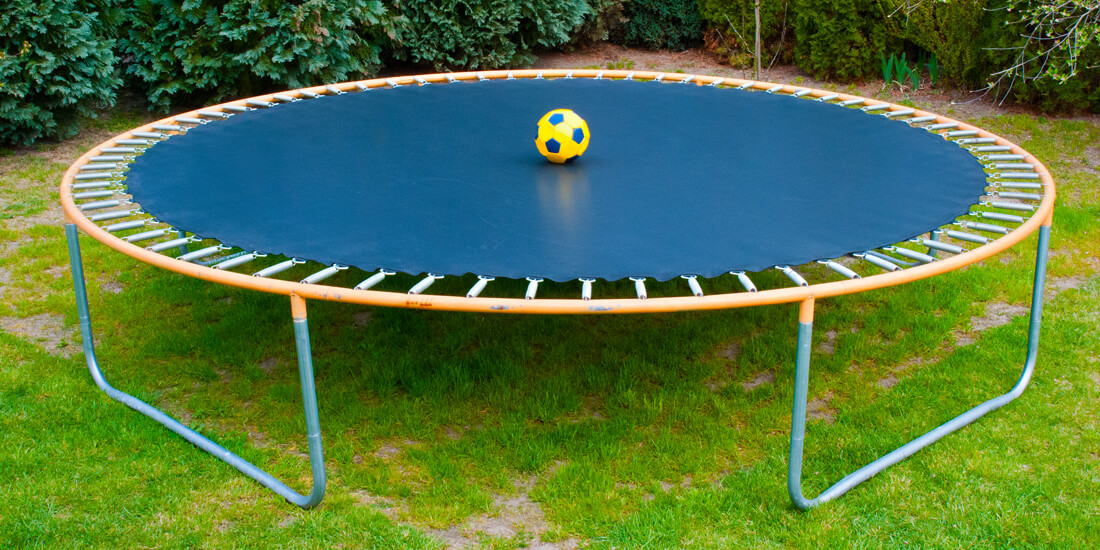End of summer repair guide

Tips for repairing your lawn after busy summer months
- Water the patchy/yellowed area after removing outdoor garden objects
- Scarify the area using a rake to remove any dead grass or thatch
- Use a quick-release fertiliser to speed up growth; we suggest using our QUICK RELEASE: Pre-Seed fertiliser
- Water the fertiliser in so it begins to work on the patches
- Overseed at a rate of 35g per m2 and rake the seed in so it is in amongst the soil
- Continue to water the repairing areas daily for the first six weeks after sowing; you can avoid doing this if there is prolonged rainfall.
- Mow the repaired areas when they reach heights of 5-7cm and are established at the 6-week mark
Repairing your lawn after summer's wear and tear
We have a helpful video on repairing your lawn, which provides summer lawn repair advice suited to mending damaged and worn areas of your garden lawn:
Things to consider for summer lawn repair
The first thing you will want to do after moving/putting the outdoor objects out of the way is to get some water on the damaged area, as it's unlikely these parched parts have had much access to rainwater during the summer.
Semi-permanent features such as trampolines, football nets, and garden tables and chairs can impact your lawn negatively, causing patchiness and yellowing grass. It's advisable to repair these areas before the cold weather sets in.
Since September still offers ideal germination temperatures in most parts of the UK, the end of summer and into autumn is a great time to sow grass seed. But before sowing, consult a two-week weather forecast that shows consistent temperatures of 8-10 degrees and above.
Following this, you’ll need to the area to remove any dead grass or thatch that has built up and rough up the top layer of soil in the area so that it is fine and loose. To give your patches a boost and help existing grass already in the area thrive, we recommend applying a quick-release fertiliser.
Feeding your grass with lawn fertiliser
Our QUICK RELEASE: Pre-Seed fertiliser will provide the soil, new seed and existing grass with all the nutrients it needs to accelerate growth. This fertiliser is best applied at a rate of 70g per m2. Ensure the granules are watered in until they are dissolved entirely so that the granules are activated and begin feeding your grass to repair the patches.
Once the granules have dissolved, you can begin preparing your seedbed for sowing grass seed.
Overseeding the bare, damaged and patchy lawn areas
Whilst you may want the fastest results, it is always best to overseed with a grass seed mix that is of high quality and fit for purpose – you can read more about that in our guide for choosing the best grass seed. You should overseed with your chosen mix at 35g per m2 and continue to water the area daily for six weeks after sowing. But on days when there's a lot of rainfall in your area, you can avoid doing this.
Reseeding an existing lawn involves several steps to ensure successful growth:
- Start by clearing away any dead grass, weeds, or moss through scarifying or raking the area.
- Thoroughly rake the soil to achieve a loose texture.
- Plant the recommended amount of seed, around 35g per m2, using a seed spreader or your hand.
- Bury the seeds about 5mm to 10mm beneath the surface, approximately as deep as three stacked pound coins.
- Gently rake the seeded area to incorporate the seeds into the soil.
- Compact the soil lightly by walking over it or using a roller to enhance seed-to-soil contact.
- During the following six weeks, ensure your lawn receives deep and daily watering, excluding rainy days.
- Allow up to six weeks for your lawn to establish itself fully.
- Once the lawn displays consistent coverage and grass blades reach a height of 5-7cm, it's time for the first mowing.
- To maintain a healthy, weed-free lawn, make sure to apply regular fertilization as per our recommended fertilizing program outlined below.
For further reading, we have a guide on when to feed your lawn with fertiliser, which significantly benefits summer lawn repair.
We also have a helpful guide on lawn overseeding and all that the process involves.
If you have any other questions, please send us a message; we are always happy to help.